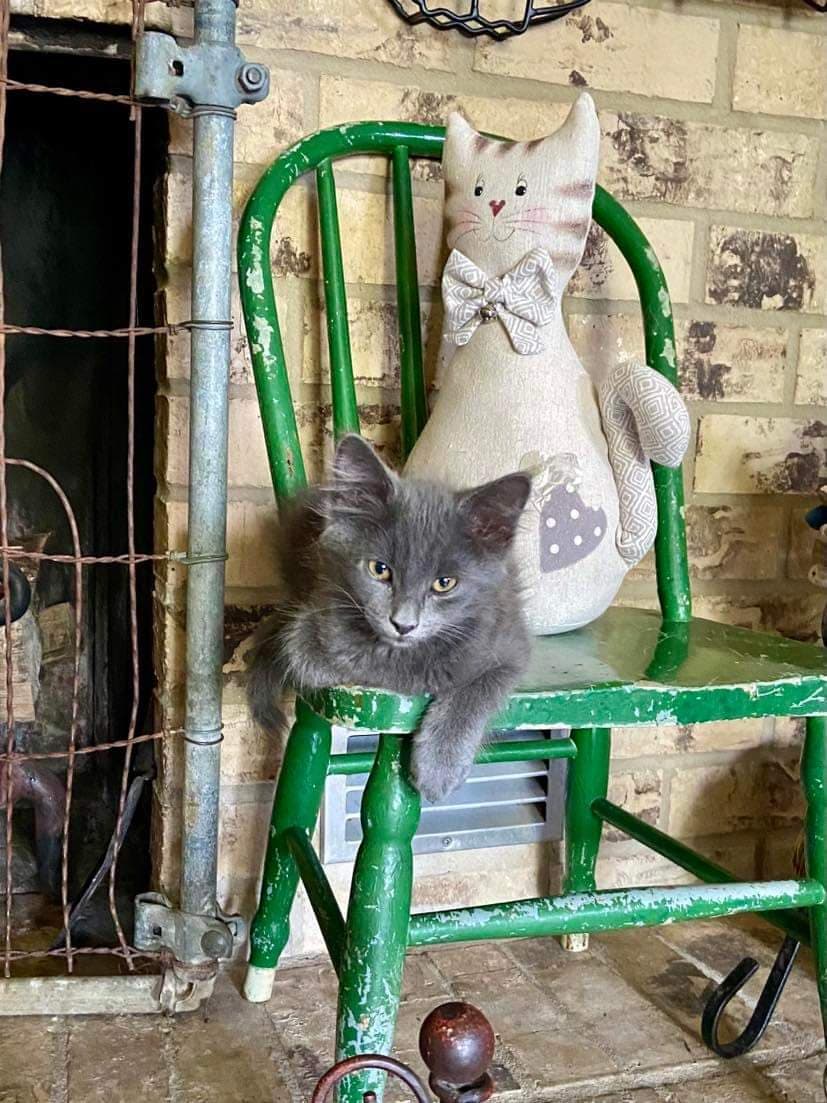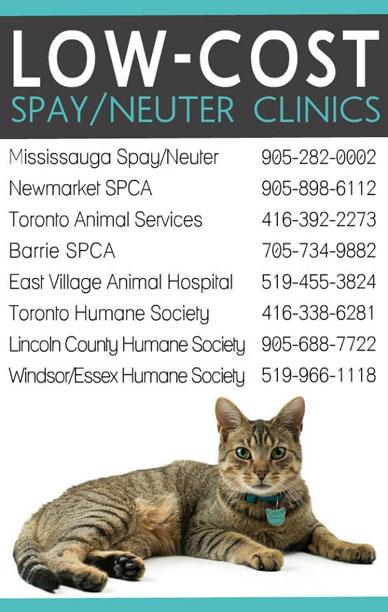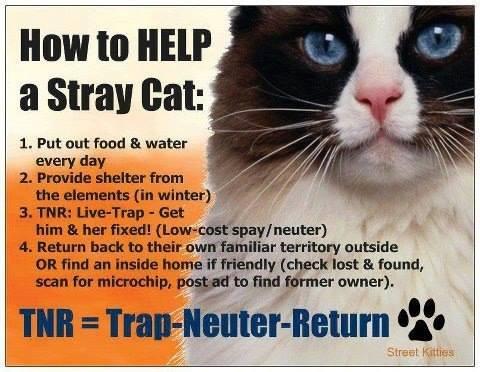
So many people come to us when they find a stray cat but, like most rescues, we are usually too full to take on the financial and foster requirements to help every cat. But you can still save that cat by doing the following:
Yes…
If you can pick him/her up, then the first step is taking him/her to a vet to scan for a microchip. Make sure the vet scans all over as microchips can migrate. (Vets shouldn’t be charging for this service)
I f there is no microchip then you should get him/her fixed and vaccinated. Follow the options in the “Spay/Neuter/Vaccinate” section
(Note: If the cat is very friendly, then s/he may be lost so take a picture and post on helpinglostpets.com to help find the owner.)
No…
If you can’t pick him/her up, then you will need to trap him/her. You have a few options in this regard:
There are several options for spay/neuter/vaccination. If you took the TNR workshop mentioned above, then you can book a free spay/neuter with the Feral Recovery Program. The other options are:

If the cat is not friendly and you need to release him/her after neutering:
Always release him/her where you got him/her from unless you have reason to believe s/he will be in danger. If it is not safe to release him/her back then you must talk to the Feral Cat Coalition or Toronto Street Cats to discuss options. Moving a feral cat from his/her territory can be a death sentence and be done solely as a last resort as they do not adapt well to this type of change.
Also please attend and/or purchase feral cat shelters from www.torontostreetcats.com/shelterbuilding/. These shelters will make a difference between life and death during the winter for these ferals. They cost $15 each completely built. Please be sure to supply the feral(s) with food and water all year round.
If the cat is friendly and can be adoptable with a little socialization:
You have two options:
We are providing a list of some of the low-kill animal shelters in the region. It is not inclusive but if a shelter will not commit to saying that it is low-kill to you, then it is most likely high kill and they will probably put down the cat shortly after you bring him/her in. So please be very careful where you take the cat. Do not take the cat to the OSPCA, TAS or Vaughan Animal Services as they do kill ferals if they cannot do well in a cage.
| Toronto Humane Society | www.torontohumanesociety.com |
| Vaughan Animal Services | https://www.vaughan.ca/services/residential/animal_services/Pages/default.aspx |
| Humane Society of Durham Region | http://web.humanedurham.com/ |
| Oakville Humane Society | www.omhs.ca |
| Etobicoke Humane Society | www.etobicokehumanesociety.com |
| Georgian Triangle Humane Society | http://gths.ca/ |
| Toronto Cat Rescue Stray Cat Program (not a shelter but worth mentioning as an option) | http://torontocatrescue.ca/help-for-cats/stray-rescue-program/ |
